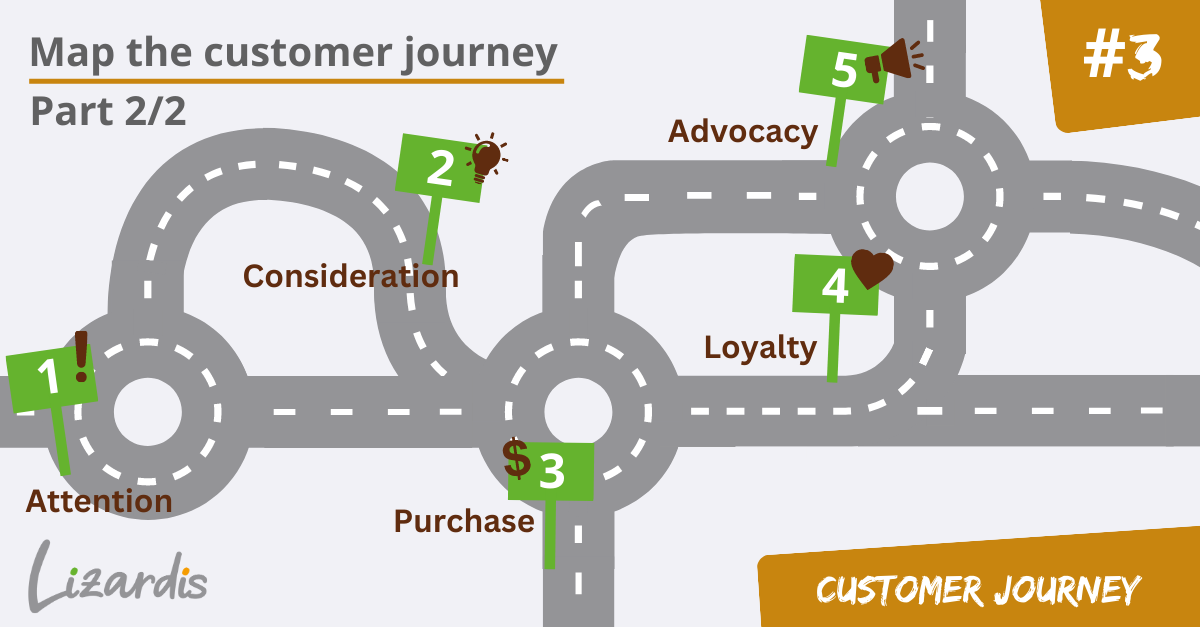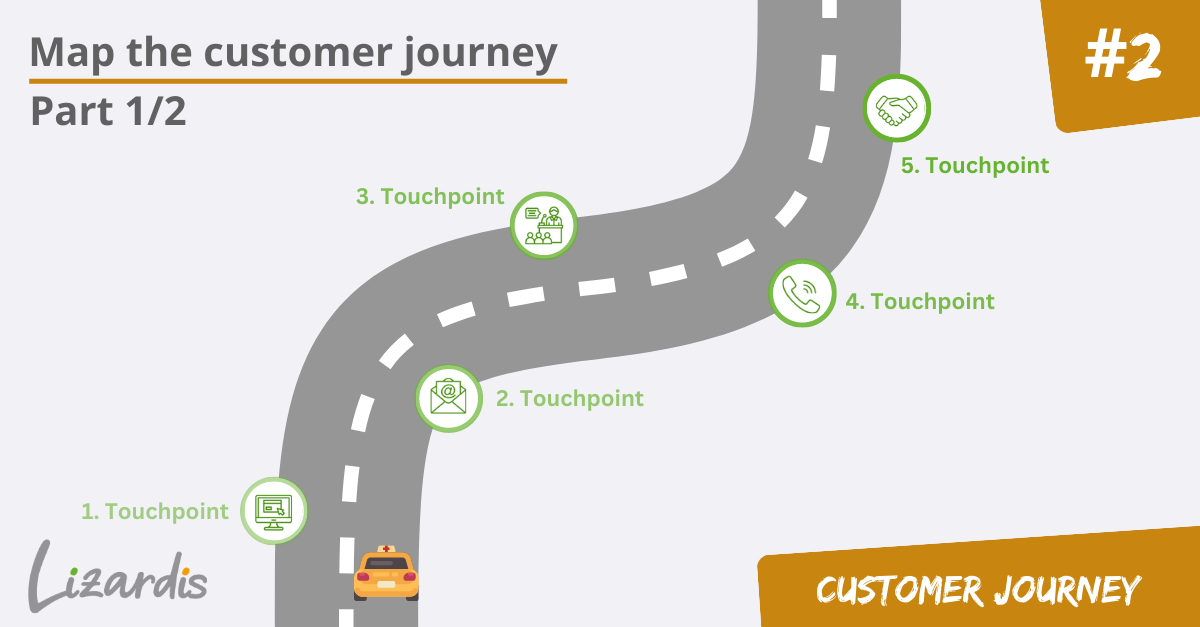Hanover, March 21 2023
In a separate blog series “Customer Engagement”, we have already described what customer engagement is, why it is important, and what measures are to be taken in order to tie customers to one’s own company. In doing so, we repeatedly refer to a related and widely used term – the Customer Journey. For this very reason, in this article I will illustrate what a customer journey looks like in the life sciences environment, what the special characteristics of this regulated market are, and what you should look out for when developing a customer journey.
The peculiarities of the life sciences industry
Before we clarify the concept of the customer journey, I would like to discuss the specifics of customer acquisition and retention in the life sciences market. From the perspective of a life sciences company, end customers are defined as the patients who use the products of the pharmaceutical industry or technologies of medical technology companies to treat or even cure diseases and their symptoms. Since this market is highly regulated in most countries of the world, life sciences companies are not allowed to approach patients directly with their advertisements. Nor are they permitted to do so with representatives of the professional community and corresponding providers, e.g., physicians or pharmacists, as an alternative.
The existing laws, data protection regulations and codes do not permit such an approach. For this reason, health care professionals, referred to as HCPs – and at this point I would like to limit myself to these for the time being – must be informed about the life science company’s products, product innovations or technologies through other channels as customers, so that they can reach patients with the appropriate prescriptions. We are thus talking about a B2B2C market here since the HCPs do not use the life sciences companies’ products themselves. Patients generally receive them via correspondingly issued prescriptions. Under this approach, there is no direct contact between the manufacturer and the consumer, or only to a very limited extent.
What is a customer journey?
So how does an HCP become a customer of a life sciences company? The path that an HCP takes together with a life sciences company is usually referred to as a journey, a customer journey. On this journey, the HCP can go through or experience five different phases, all of which are ideally reached before the customer, on the one hand, feels bound to the company’s brand in the long term, i.e., becomes loyal, and, on the other hand, even acts as an opinion leader who is considered an ambassador for the company’s own brand. But how exactly does this journey unfold? Let’s take a look at the five phases:
Phase 1: Awareness – the customer gets to know the company
The ways in which an HCP gains knowledge about a life sciences company and its products are diverse. He or she may have come across one of the company’s products during an Internet search and thus discovered the company itself. It may have been recommended to him or her by another HCP who is already using the product, i.e., prescribing it to patients. He or she may also have become aware of the product through the evaluation of study results, or the customer may have been visited by a sales representative of the company who presented it to him – to list just a few possibilities. These potential encounters are referred to as touchpoints in the context of the customer journey, i.e., points of contact between the HCP and the life sciences company. In each case, the HCP has gained a first impression and was able to obtain a general idea of the product and the manufacturer.
Phase 2: Consideration – the customer evaluates the product
After the HCP has gained initial knowledge about the product and the life sciences company, he will inevitably think about whether he should use it to treat patients who are eligible candidates for the drug or technology. He or she may still feel uncertain about its use and may accumulate additional knowledge to decide whether it makes sense to prescribe it and, if so, to which patients. In doing so, the customer can use the same channels through which he has already become acquainted with the product and its manufacturer and thus generate further touchpoints with the life sciences company. Or he makes use of other ways to answer any unresolved questions, such as an exchange with the company via e-mail or participation in a training event. The evaluation of the product can extend over a longer period and end in the HCP concluding that the product is not yet to be used, at least for the time being. Should this not be the case, the next phase inevitably follows – the customer decides in favor of the product and prescribes it to a first patient.
Phase 3: Purchase – the customer uses the product
In a classic customer journey, this stage involves the customer buying the product for the first or repeated time. In life sciences companies, however, this is the moment when the HCP starts to prescribe the product. Although he does not buy it himself, he is the one who decides that it will be paid for by the patient’s health insurance as part of the treatment in many countries around the world. The step towards the first prescription is immensely important. What seems trivial to outsiders – after all, it’s just about the physician writing the name of a drug on a prescription that he doesn’t even have to pay for himself – is usually the result of many touchpoints between the HCP and the life sciences company. In the process, all important questions concerning the product are being clarified. This involves questions about:
- Possible scenarios for the use of the product,
- Efficacy and efficiency,
- Tolerability and side effects,
- Combinability with other drugs,
- Interactions with other drugs,
- cost-effectiveness as well as
- duration of therapy and dosage,
to list only the most important topics. But even after all the questions have been answered through various channels, it may still be some time before the HCP prescribes the product. Particularly in the case of protracted or even chronic illnesses, a physician will not lightly discontinue a medication to which a patient is already adjusted to and which he or she tolerates well, just because another supposedly better product has appeared on the market.
If we look at Health Care Organizations, i.e. HCOs, such as pharmacies, wholesalers or a clinic instead, then a purchase actually takes place because pharmacies and wholesalers adjust to the changed situation, e.g. based on initial demand in pharmacies, or because a clinic has decided to use a drug for treating the disease in the future, i.e. to list it and stock up accordingly.
Phase 4: Retention and loyalty – the customer stays with you
The life sciences company aims to ensure that the product that an HCP has already prescribed several times because of good results with patients is preferred by him or her. From the company’s point of view, the customer should only ever think of its own product when deciding which product to write on the prescription – it should become the drug of choice. This can be achieved, for example, through regular interactions with the HCP, detailed e-mail correspondence or correspondingly meaningful information on the life sciences company’s websites. If the customer maintains their behavior, they will become a loyal prescriber. But even if the HCP prescribes the drug for only a few patients, but does so on a regular basis in these cases, he or she is considered a loyal customer. This may become the case if the product can be used for different disease and patient profiles, which are also referred to as casuistry within the same indication. If, in the HCP’s opinion, the drug does not cover all disease patterns, he prescribes it only where it seems appropriate, but in return on a steady basis. Consequently, the customer has also reached the fourth phase of the customer journey in this case and is considered to be loyal.
Phase 5: Advocacy – the customer takes a stand for me
If an HCP is convinced of the life sciences company’s product, he or she may also express this to other customers, tell them about his good experiences, answer their questions and even influence them in such a way that they themselves begin to prescribe the drug on the basis of his recommendation. The customer has reached phase five and acts as an opinion leader. Depending on the reach of the network in which they operate, they are also referred to as key opinion leaders, or KOLs for short. These opinion leaders, who are basically product or even brand ambassadors, are highly valuable for a life sciences company, as they can significantly support the company in accompanying other HCPs on their customer journey. In order for other HCPs to learn that this customer is an opinion leader, it is not uncommon for these HCPs to be trained as speakers, moderators or chairmen, who then speak, moderate or chair medical education events that life science companies regularly organize and host. These events are important touchpoints for many customers on their individual journey with the company. The HCP, acting as a contractual partner of the life sciences company, increases his/her personal network in this way. On the company’s side, the perception within the medical profession and other members of the medical community increases.
Also, a presentation by the HCP at partly supra-regional congresses or the appearance at symposia, which are supported but not organized by the life sciences company, is a possible scenario to increase the reach and perception of both the HCP and the company.
In addition, participation in clinical studies for new products or studies regarding approval extensions for already approved products can be considered as a further touchpoint on the customer journey. For the HCP, corresponding publications again offer the opportunity to increase their reach within their personal network. For the life sciences company, besides the obvious contribution to the study, such a liaison again offers the opportunity to tell other HCPs about the collaboration and thus increase the added value of the product or its own brand.
Prospects
As we have seen, a customer journey consists of up to five stages. In theory, the customer journey is viewed in simplified form as a linear process that aims to reach stage 5.
However, the goal of the life sciences company does not always have to be the achievement of at least phase 3, i.e., prescribing a medication. The goals set can also be much smaller, such as the registration of an HCP for a newsletter, or relate to different products, so that the result can consist of many customer journeys to different goals or products for one and the same customer.
In my next article, I would therefore like to outline possible customer journey maps for an exemplary persona that show how the processes and touchpoints within a single phase of the customer journey may look.
You want more insights?
Check out our other blog articles about customer engagement!
Omnichannel-Management: From product centricity to customer centricity (1/3)
Omnichannel marketing enables the shift from product centricity to customer centricity. Learn more about how it differs from other concepts.
Mapping Life Sciences Customers in the Customer Journey (2/2)
The ideal-typical course of the Customer Journey with phases 1 to 5 not always realistic. Also consider alternative paths that your HPCs follow.
Mapping Life Sciences Customers in the Customer Journey (1/2)
Get to know your customers better by developing customer journey maps for different personas to improve customer engagement.
The Customer Journey in Life Sciences: Taking the customer on a journey – what does that mean?
Develop your contacts along the customer journey into sustainable customers. In our article, we tell you what to look out for in the life sciences environment.






